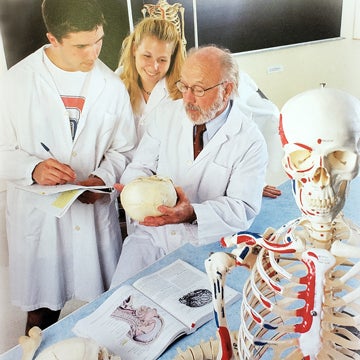
Ranney studied anthropology and linguistics and graduated in medicine from University of Toronto in 1958. He studied surgery in Great Britain, becoming a Captain in the Special Air Service, and went to India performing reconstructive surgery on victims of leprosy.
In 1976, Ranney joined the University of Waterloo’s Department of Kinesiology as a professor of anatomy, later cross appointed with the School of Optometry. He was charged with establishing a school of anatomy – a guarded privilege reserved for the province’s medical schools. In preparation for the proposal, he met with all but one of the anatomy teachers in the province.
On January 17, 1978, the University of Waterloo School of Anatomy was established by Order in Council of the Government of Ontario to enable students of human movement to gain an in-depth knowledge of the structure of the human body. "I believe that the School of Anatomy, which makes possible this approach to learning, has helped to make our graduates better scientists,” explained Ranney in his recollections on the School.
As the head of the School of Anatomy, Ranney taught anatomy and sports medicine for two decades, publishing more than a hundred scientific papers on topics that varied from anatomy, biomechanics, muscle physiology, and surgery of the hand, to work-related injuries, and neuroanatomy of chronic pain. At the same time, he ran a part-time clinic for athletes and those injured at work or in motor vehicle accidents.
Known as a person of many interests and talents, he obtained a diploma in television production at The Banff Centre, researched the biomechanics of dance, was a military and sport skydiver, and was team physician for many local and national sports teams, including the Canadian men’s softball team that won the Pan-American Gold Medal in 1983.
After retiring in 1996, he returned as adjunct faculty to teach introductory anatomy, while operating a business performing orthopedic medical evaluations for lawyers and insurance companies on clients involved in motor vehicle accidents, slip-and-fall and work injuries.
A plaque in his honour graces the School, noting that Ranney’s "tireless efforts (...) made possible the dissection of human material for the purpose of learning anatomy at this university. Through his exemplary administration, (...) Professor Ranney ensured that the cadavers would always be treated with respect and gratitude. His rigorous and creative teaching, illustrated from his experiences as a practicing physician and his innovative research and writing, have demonstrated the importance of anatomical knowledge in the promotion of health."